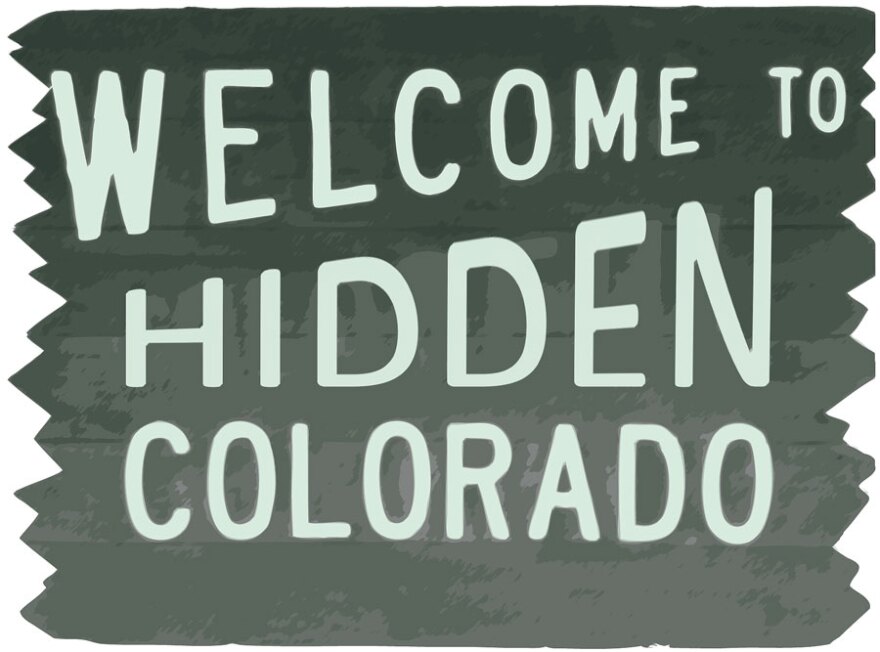Colorado is known worldwide for incredible skiing on its magnificent mountains… but the resort experience also comes with long lines and uber-expensive lift tickets. Back in the 1970s you could have simply headed to Greeley.
Instead of dodging moguls, you could have been dodging tumbleweeds at Sharktooth Ski Area – located on the plains east of the Rockies, perched atop a 150-foot bluff overlooking the Poudre River.
"It was very short – to come down took maybe a minute or two, for a good skier," said Ulli Limpitlaw, Sharktooth's ski school director between 1973 and 1978.
A native of Austria, Limpitlaw has fond memories of the family-friendly ski area that some affectionately referred to as the "World's Smallest Ski Resort."

"We had lessons, the public came out for night skiing, we had an ice skating rink and tubing," Limpitlaw recalled. "There was a warming hut, there was hot chocolate available… and later in the day there would be hot wine. It was a fun place, it really was."
Sharktooth was developed by former University of Northern Colorado professor and one-time Greeley mayor Dick Perchlik along with local businessman Clyde Davis. The two had been flying to Steamboat Springs for a weekend of skiing, but bad weather kept them from landing. Flying back to Greeley, they noticed a snow-covered "mini-mountain" -- and came up with the idea to build a ski area that would cater to Front Range families and fledgling skiers.
On Dec. 17, 1971 the dream became a reality when Sharktooth opened with one 400-foot wide ski slope with a 1,000-foot drop, accessed by a 600-foot rope tow. Over the years it grew to include include three 1500-foot tubing runs and an ice skating rink.
"It was a beginners' area only," Limpitlaw said. "We taught mostly UNC and Aims classes. We also taught children and some adults who wanted to learn how to ski in a not-so-scary environment."
Millions of years ago, 'scary' might actually have been the perfect description for the area – which, including the 150-foot high bluffs – was entirely underwater beneath a shark-infested sea.
The discovery of small fossilized sharks' teeth at the site prompted the name. (The founders originally planned to call the resort Fun Valley, but apparently that name was taken.)
Writing for the Greeley Museum, Development Curator and Historian Peggy Ford penned the following about the seemingly impossible little ski slope near Weld County Road 25 and Highway 34:
"Winds frequently deposited a dark brown layer of topsoil from farmers’ fields onto the ski slope. Pristine white snow reflects light, but "soiled" snow absorbs light and heat, causing it to melt more quickly. Snow fences were installed, and over the years 1,000 trees were strategically planted to alleviate the blowing topsoil. Once, Sharktooth closed its runs because skiers were struck by "tumbling tumbleweeds!'"
Skiers occasionally having to dodge tumbleweeds? Limpitlaw said that did happen.
"Yes, tumbleweeds… and every so often a bunny would run across," she laughed. "There were things that happened out there that wouldn't happen in Winter Park or Steamboat. I liked that."

While certainly not glamorous, especially compared to resorts in Aspen or Vail, Sharktooth was very budget-friendly. An all-day pass in the 1970s was $3.50 for adults; night skiing was $2.50, and tubing and ice skating cost 50 cents. At its most expensive, an adult lift ticket only cost $8.00 in 1985.
The idea was never a lucrative one. During its best snow year (1985) Sharktooth posted a profit of $800. But Perchlik's friends and family say he was happy with the way his vision of affordable winter family fun became a reality.
Sharktooth faced many challenges in later years, including a lack of natural snow, rising insurance costs, and Perchlik's declining health. Skiing ended in 1986. Today, Sharktooth is in private hands; an ornate gate acknowledges its past.
"He had a vision. Flying over and looking down, and deciding 'this is where I'm going to build a ski area' – in Weld County, of all places," Limpitlaw fondly said of Perchlik. "People with a vision, I think they bring gifts to the world."
Explore the map and help us find more of the lost, forgotten or the little-known in the Centennial State. Have an idea? Send us a tip for Hidden Colorado.









